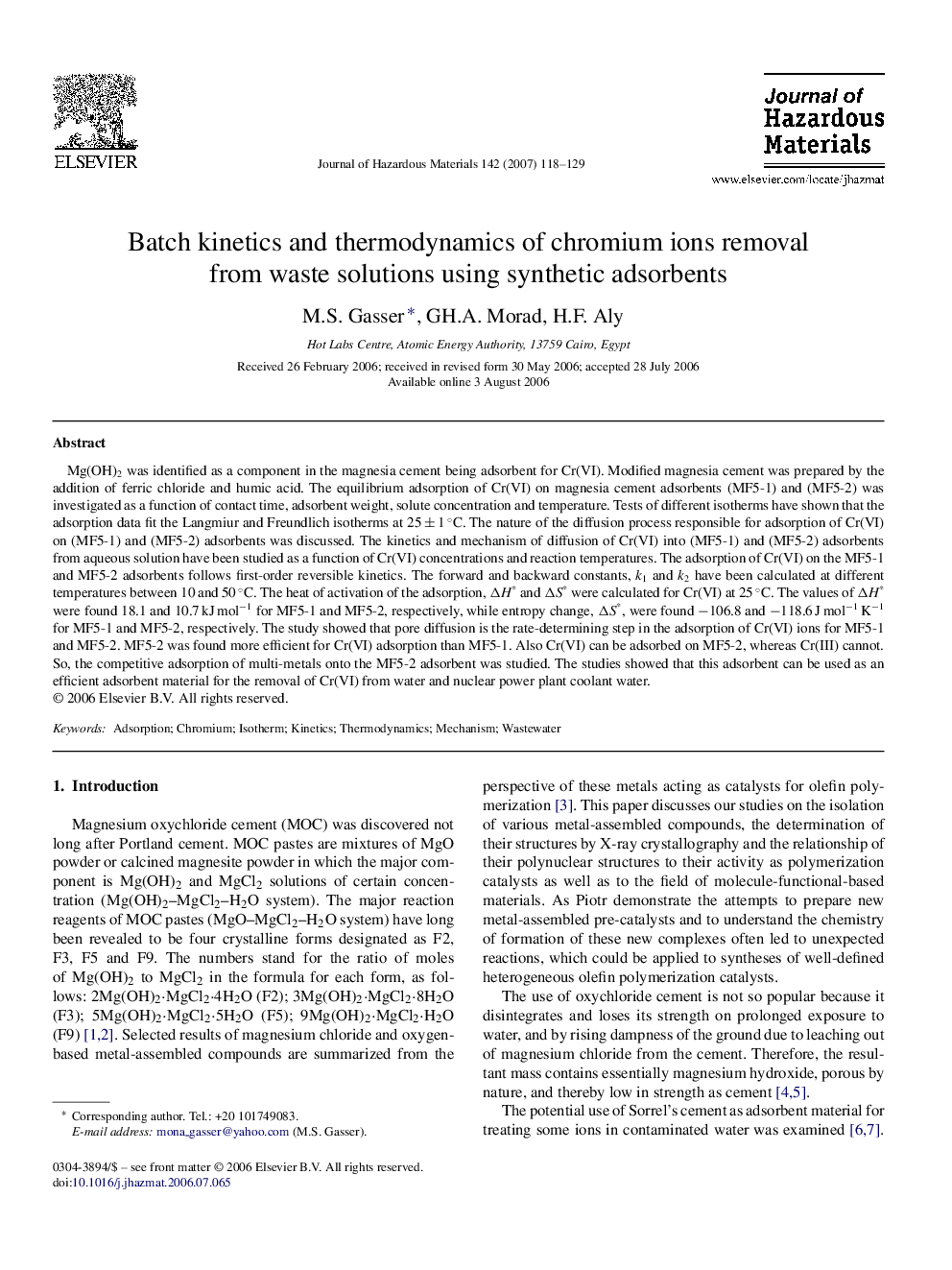| Article ID | Journal | Published Year | Pages | File Type |
|---|---|---|---|---|
| 584529 | Journal of Hazardous Materials | 2007 | 12 Pages |
Abstract
Mg(OH)2 was identified as a component in the magnesia cement being adsorbent for Cr(VI). Modified magnesia cement was prepared by the addition of ferric chloride and humic acid. The equilibrium adsorption of Cr(VI) on magnesia cement adsorbents (MF5-1) and (MF5-2) was investigated as a function of contact time, adsorbent weight, solute concentration and temperature. Tests of different isotherms have shown that the adsorption data fit the Langmiur and Freundlich isotherms at 25 ± 1 °C. The nature of the diffusion process responsible for adsorption of Cr(VI) on (MF5-1) and (MF5-2) adsorbents was discussed. The kinetics and mechanism of diffusion of Cr(VI) into (MF5-1) and (MF5-2) adsorbents from aqueous solution have been studied as a function of Cr(VI) concentrations and reaction temperatures. The adsorption of Cr(VI) on the MF5-1 and MF5-2 adsorbents follows first-order reversible kinetics. The forward and backward constants, k1 and k2 have been calculated at different temperatures between 10 and 50 °C. The heat of activation of the adsorption, ÎH* and ÎS* were calculated for Cr(VI) at 25 °C. The values of ÎH* were found 18.1 and 10.7 kJ molâ1 for MF5-1 and MF5-2, respectively, while entropy change, ÎS*, were found â106.8 and â118.6 J molâ1 Kâ1 for MF5-1 and MF5-2, respectively. The study showed that pore diffusion is the rate-determining step in the adsorption of Cr(VI) ions for MF5-1 and MF5-2. MF5-2 was found more efficient for Cr(VI) adsorption than MF5-1. Also Cr(VI) can be adsorbed on MF5-2, whereas Cr(III) cannot. So, the competitive adsorption of multi-metals onto the MF5-2 adsorbent was studied. The studies showed that this adsorbent can be used as an efficient adsorbent material for the removal of Cr(VI) from water and nuclear power plant coolant water.
Related Topics
Physical Sciences and Engineering
Chemical Engineering
Chemical Health and Safety
Authors
M.S. Gasser, GH.A. Morad, H.F. Aly,
